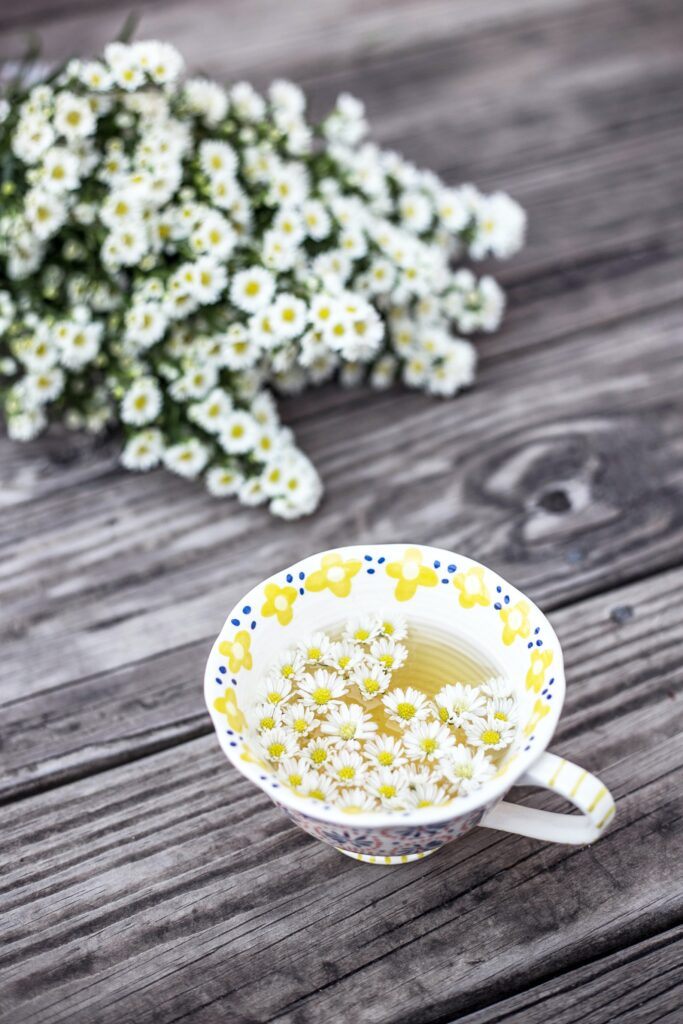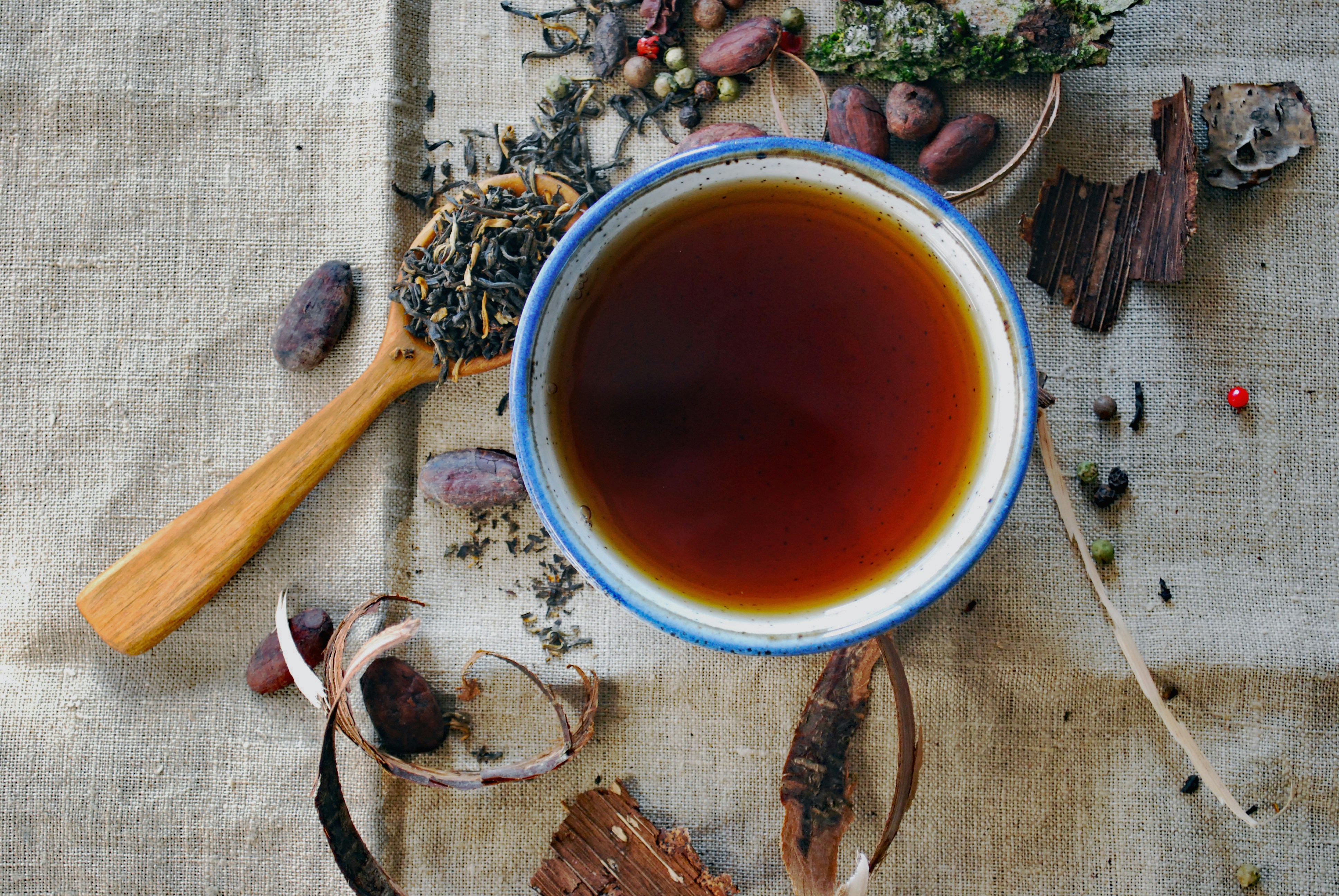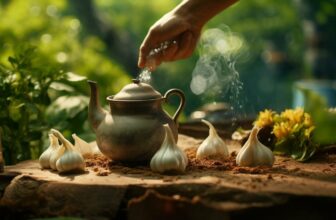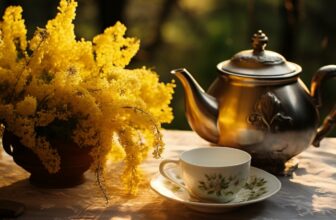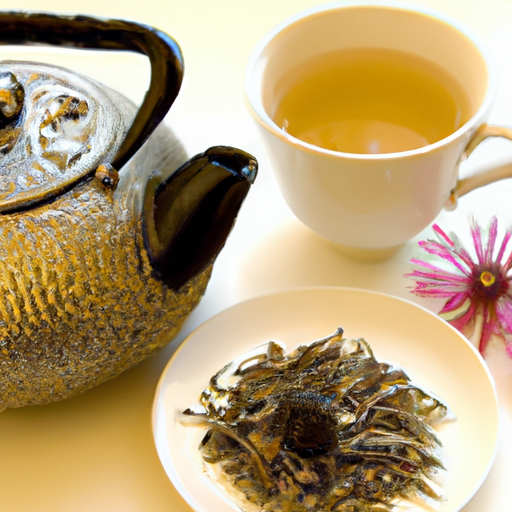
Hello there, fellow tea enthusiasts! I am thrilled to take you on an exciting journey where we’ll wave our magic wands, or rather, our wooden spoons in our kitchens, and brew a refreshing cup of Chaparral tea. This intriguing herb, native to the southwestern region of the United States, has been appreciated for its healing properties for centuries and there is truly an art to perfecting its preparation. Let’s stir the pot together and unravel the secrets of making an invigorating and therapeutic cup of Chaparral tea.
Understanding Chaparral
Chaparral, known scientifically as Larrea tridentata, is a small shrub that is native to the arid regions of the Southwestern United States and parts of Mexico. Notably used as part of traditional medicine in these regions, Chaparral tea may seem a bit unconventional to some, but those who delve into the world of herbal teas might find it quite beneficial and potentially therapeutic.
Defining Chaparral
Chaparral is a desert shrub that bears small, bright green leaves and petite yellow flowers. Also known as Creosote Bush due to the distinctive smell released when it rains, this plant has grown quite popular in various forms, including as a wonderfully calming tea.
Chaparral Origins and History
Chaparral gets its name from the Spanish word ‘chaparro’, meaning small evergreen oak. This resilient plant has a long history with Native American tribes who have used it for centuries to treat various ailments. From using it as a powerful antioxidant to a potential remedy for respiratory issues, Chaparral has earned a prominent place in folk medicine over the years.
Different Species of Chaparral
While the term ‘chaparral’ is generally used to describe Larrea tridentata, it’s important to note that ‘chaparral’ is also used as a collective term to describe a group of similar desert plants that thrive in similar climate conditions. These various species under the chaparral umbrella include manzanita, scrub oak, and chamise, to name a few.
Health Benefits of Chaparral
Large doses of Chaparral can be harmful, but in moderate amounts, it’s reputed to have antibacterial, anti-inflammatory, and antioxidant properties. Some claim it to be helpful in treating issues such as skin disorders, digestive problems, and respiratory conditions, although these benefits are yet to be confirmed by scientifically controlled studies.
Potential Side Effects of Chaparral
While Chaparral tea indeed boasts a myriad of potential health benefits, consuming it in excess may lead to adverse effects, including kidney and liver damage. So it’s best to consume it in moderate amounts, ideally under professional guidance if used therapeutically.
Sourcing and Identifying Chaparral
When it comes to reaping the benefits of Chaparral, it inevitably begins with sourcing and correctly identifying the shrub.
Where to Find Chaparral
Chaparral typically grows in desert regions. The dripping sap of the Creosote bush hardens into a gum-like resin and is believed to be the main source of its therapeutic properties. If you don’t live in an area where Chaparral grows naturally, you can purchase it online or at health food stores.
Identifying Chaparral Plant
A shrub of modest size, Chaparral showcases shiny green leaves that are tiny and wax-coated. The plant also bears bright yellow flowers, ultimately making it an easily identifiable plant even for those not familiar with desert flora.
Best Season for Harvesting Chaparral
The ideal season for harvesting Chaparral is in the spring when the plant is in full bloom. Harvesting it during this time ensures that it’s at its peak in terms of therapeutic properties.
Buying Chaparral from Trustworthy Suppliers
To ensure the chaparral’s quality, always purchase from suppliers with a good reputation. Also, make sure to check that their products are organically grown, free from pesticides and synthetic chemicals.
Storing Chaparral Properly
Once you’ve sourced reputable Chaparral, storage is crucial. Store it in a dry, cool, and dark place, preferably in an airtight glass container. Under proper conditions, it should stay potent up to two years.
Preparation Before Making the Tea
Just like with any other tea, preparing chaparral tea requires some careful preparation.
Drying Chaparral Leaves
After harvesting the chaparral leaves, spread them out in a single layer to let them dry naturally. The drying process usually takes a few days but can speed up in warm, dry weather.
Preparing the Tea Infusion Materials
You will need a teapot or diffuser capable of holding the chaparral leaves and allowing proper brewing. Also, have hot water ready, being mindful of the correct brewing temperature.
Cleaning and Sterilizing Tea Equipment
Ensure that your tea tools are sterilized to avoid contamination and enhanced flavor. You can quickly sterilize your tea equipment by rinsing it with boiling water.
Calculating the Correct Quantity of Chaparral
For a typical brew, roughly use one tablespoon of dried chaparral leaves for every cup of water. However, this can vary depending on taste preferences.
Step by Step Guide to Making Chaparral Tea
Making chaparral tea is fairly straightforward, requiring just a few simple steps.
Boiling the Water
Start by boiling water in a pot or kettle. Aim for a medium boil, not a rapid, rolling boil.
Adding the Chaparral Leaves
Pour the boiling water over the chaparral leaves in your teapot or infuser.
Determining the Right Steeping Time
Steep the tea for about 15 to 20 minutes. Steeping time may vary according to taste.
Straining the Tea Leaves
After steeping, strain the tea to remove the leaves.
Cooling Down and Serving the Tea
Let the tea cool a bit before consuming. Enjoy it warm, but not too hot.
Combining Chaparral with Other Herbs
The beauty of Chaparral tea is that it can be combined with a myriad of other herbs each bringing its own unique flavors and health benefits.
Experimenting with Different Herb Combinations
Chaparral’s unique flavor blends well with a variety of herbs. Feel free to experiment and find your favorite combination!
Determining safe and complimentary herbs
It’s essential to determine which herbs can be safely combined with chaparral. For instance, elderberry, echinacea, and ginger are safe and compatible options.
Adjusting measurements for blended herbal teas
When combining chaparral with other herbs, adjustments in measurements may be necessary. It can be a process of trial and error to discover the right combinations and proportions.
Flavor profiles of common herb pairings with chaparral
Common pairings with chaparral include mint for a cooling and calming blend, or ginger for a spicy kick. These combination results in a complex yet intriguing flavor profile.
Enjoying Chaparral Tea
The enjoyment of any tea often extends beyond the simple act of consuming it.
Selecting Suitable Teaware
The choice of teaware can greatly enhance your tea-drinking experience. Opt for teaware that maintains the tea’s temperature for an extended period and is easy to clean.
Choosing the Best Time to Drink Chaparral Tea
There’s no hard and fast rule about when to drink chaparral tea. It can be enjoyed at any time of the day but is particularly calming in the evenings.
Pairing Chaparral Tea with Food
Chaparral tea can go well with sweet or savory snacks, depending on personal preference and the specific blend of your tea.
Determining the Proper Serving Temperature
Serve chaparral tea hot, but not scalding. A general rule of thumb is to serve herbal teas at a temperature around 212°F (100°C).
Heating Methods
Different heating methods can adjust the flavor profile and overall experience of your chaparral tea.
Stove Top Boiling
Stove top boiling is a tried and true method that allows for exact control over water temperature.
Microwave Heating
If you are short on time, heating water in a microwave can be a practical alternative, though it doesn’t offer the same level of temperature control.
Electric Kettle
An electric kettle is a fast and predictable method especially models that offer variable temperature settings.
Slow Cooker/Crock Pot Method
It’s also possible to slow-steep chaparral in a crock-pot. This extended steeping method allows for a deep productive extraction but requires more time.
Storing Chaparral Tea
Just like any other kind of tea, chaparral tea also requires proper storage to keep it fresh.
Optimal Storage Conditions
Store chaparral tea in a cool, dark, and dry place. Moisture, heat, and direct sunlight can adversely affect the tea’s freshness and potency.
Duration of Chaparral Tea’s Freshness
When stored correctly, chaparral tea can stay fresh and retain its efficacy for up to two years.
Signs of Expired Chaparral
Stale chaparral might lose its distinct smell or change its color. In this case, it’s best to discard it and prepare a fresh batch.
Reheating and Consuming Stored Chaparral Tea
You can reheat stored chaparral tea on a stovetop or in a microwave. Stir the tea before drinking to ensure that its flavors are evenly distributed.
Common Chaparral Tea Making Mistakes
Tea-making is an art that needs a little bit of finesse.
Incorrect Water Temperature
One common mistake when making chaparral tea is not getting the temperature of the water right. Too hot and it may lead to bitterness; too cold, the flavors might not fully release.
Improper Steep Time
Steeping for too long or too little can affect the flavor of the tea. Aim for 15-20 minutes of steeping time.
Using Poor Quality Chaparral
The quality of the chaparral you use will directly influence the tea’s taste and potential health benefits. Always source from reputable suppliers.
Not Storing Chaparral Properly
Proper storage is crucial to maintain freshness and potency. Keep in a cool, dry place, away from direct sunlight.
FAQs about Chaparral Tea
Here are some commonly asked questions about making and consuming chaparral tea.
Can Chaparral Tea be Consumed Cold?
Yes! Chaparral tea can most definitely be served cold. Once brewed, simply allow it to chill in the refrigerator before serving.
Does Chaparral Tea Contain Caffeine?
No. Like most herbal teas, chaparral tea is naturally caffeine-free, making it a great choice for late-night sipping or for those sensitive to caffeine.
What is the Ideal Dosage of Chaparral in Tea?
It’s recommended to use one tablespoon of dried chaparral leaves per teacup. However, these quantities can be adjusted to suit one’s personal taste.
How Frequently Can Chaparral Tea be Consumed?
Chaparral tea can be consumed daily. But, like with all herbal products, it’s best to adhere to moderate use and perhaps limit intake to 1-2 cups per day.
In conclusion, chaparral tea offers a delightful combination of unique flavors and potential health benefits. Whether you are a tea enthusiast or simply someone looking to explore the realm of herbal remedies, brewing a cup of chaparral tea could be a beautifully calming and therapeutic method to connect with the wonders of nature. Enjoy the process, from sourcing to sipping, and relish in the simple pleasure of a well-crafted cup of tea.
Hi, I’m Mat Boehmichen, the author behind The Tea Masters Hub. I’m passionate about all things tea and I want to share that passion with you. At The Tea Masters Hub, my mission is to provide you with all the knowledge and resources you need to truly understand and appreciate tea. Whether you’re a novice or a seasoned tea enthusiast, I’m here to guide you on your tea journey. From the art of preparation to the joy of sipping, I’ll teach you everything there is to know about tea. So join me on this flavorful adventure and let’s explore the world of tea together.
